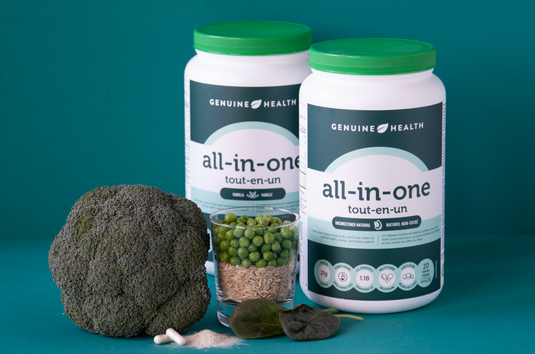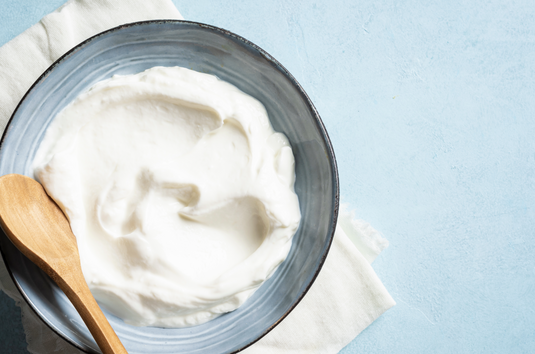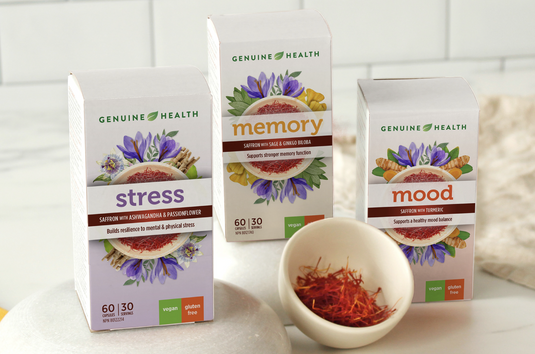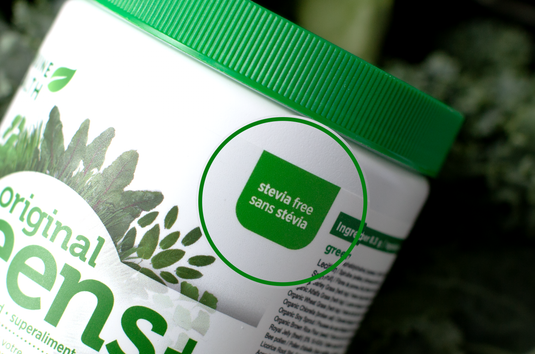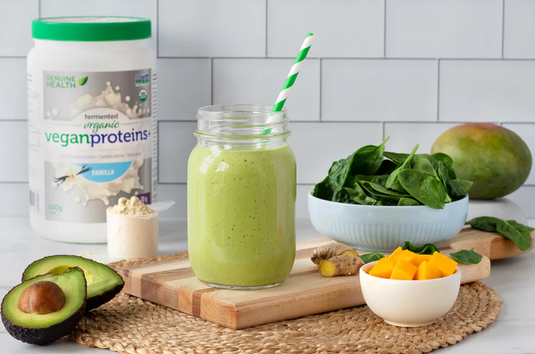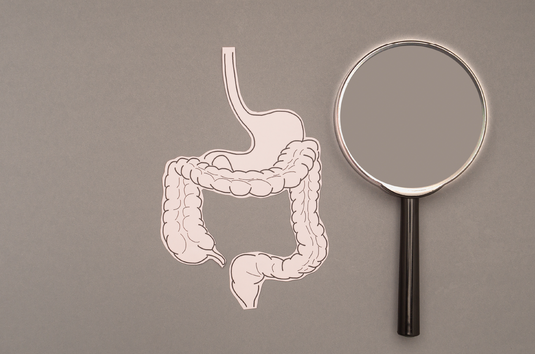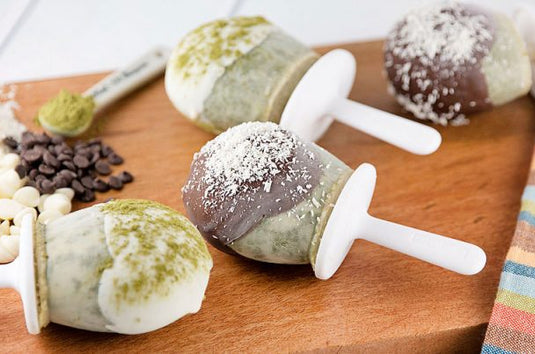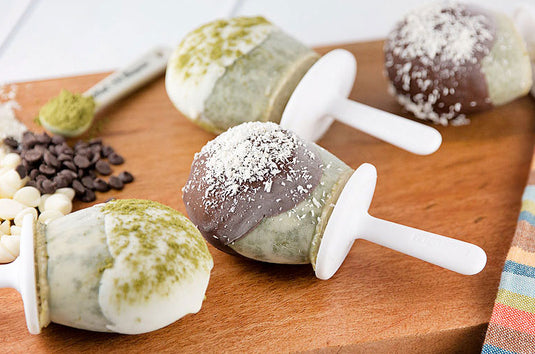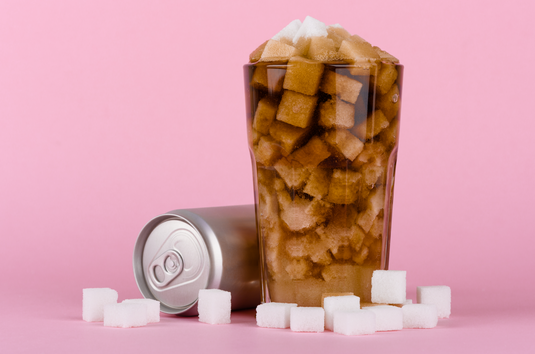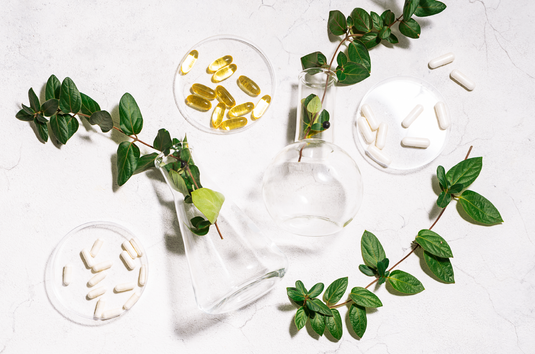Comment choisir des suppléments probiotiques
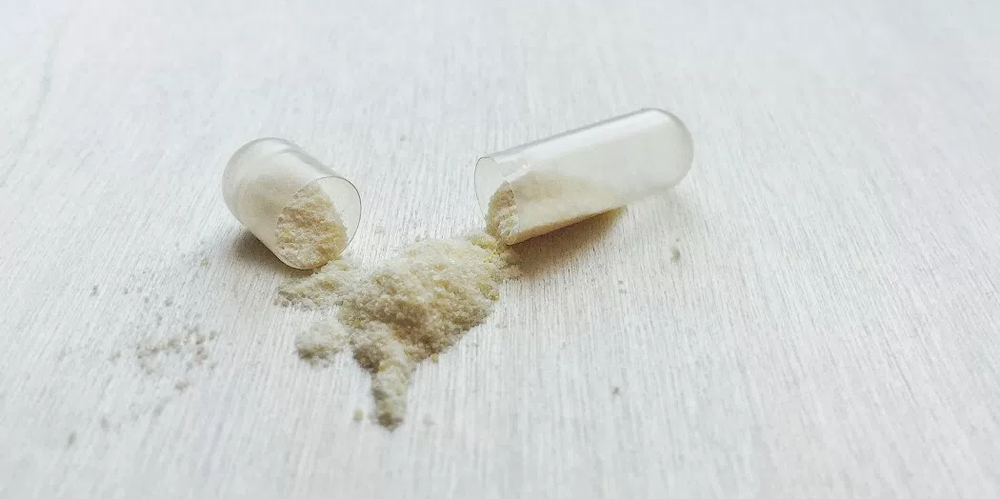
C’est peut-être l’une des questions qu’on me pose le plus souvent… comment choisir le bon probiotique.
Avec une prise de conscience croissante de l'importance de ces bonnes bactéries et de leur impact considérable sur notre santé globale, de plus en plus de personnes recherchent des compléments probiotiques pour traiter une multitude de problèmes de santé, du syndrome du côlon irritable à l'inflammation en passant par les troubles immunitaires. Mieux comprendre notre écosystème interne de micro-organismes nous permet de mieux en prendre soin. Imaginez-le comme cultiver votre propre microflore. Mmmmm, c'est génial !
Excusez-moi pendant que je m'amuse un instant, car je suis vraiment excité de parler de probiotiques et de santé intestinale.
Saviez-vous que notre corps contient dix fois plus de microbes que de cellules (environ 100 000 milliards !) ? Collectivement, nous appelons cela notre microbiome : notre écosystème microbien personnel. La plupart de ces minuscules super-héros vivent dans notre tube digestif.
En bonne santé, nous avons un bon équilibre entre bonnes et mauvaises bactéries. Mais si nous ne prenons pas soin de nous (mal manger, être très stressé ou prendre des antibiotiques), nous épuisons les bonnes bactéries et les mauvaises se déchaînent (un peu comme lorsqu'on jette de l'eau sur des gremlins).
Idéalement, les bonnes bactéries devraient être plus nombreuses que les mauvaises. Un bon équilibre de bonnes bactéries intestinales a un effet positif sur un nombre considérable de maladies dans l'organisme, comme :
Avec la sensibilisation et la demande croissantes, le choix de compléments probiotiques ne manque pas. Je sais que cela peut être déroutant. J'écris donc cet article pour clarifier certains points.
J'ai beaucoup d'informations à partager, mais je vais garder cet article concentré sur un guide d'achat de suppléments probiotiques.
Probiotique : Bactéries vivantes et bénéfiques qui favorisent une bonne santé.
Prébiotique : Nourriture pour ces bonnes bactéries pour les garder fortes et favoriser leur croissance.
UFC : Unités Formant Colonies (essentiellement, le nombre de bactéries viables/vivantes). Les bactéries vivantes se multiplient et colonisent donc votre intestin. Compréhensible ?
Micro-organismes : Ensemble des micro-organismes qui peuplent le corps humain. Bactéries, champignons et virus, par exemple. (Les probiotiques sont des micro-organismes.)
Microbiome : L’ensemble de l’écosystème des micro-organismes de notre corps (y compris les « bonnes » et les « mauvaises » bactéries).
Souches : Variantes génétiques parmi les micro-organismes. Par exemple, il existe deux grandes catégories de probiotiques (les lactobacilles et les bifidobactéries), et au sein de ces groupes, on compte plus de 400 sous-catégories (souches) différentes dans notre seul tube digestif.
Est-ce que tu as trouvé ça aussi amusant que moi ?
Maintenant que nous avons compris cela, je suis heureux de vous annoncer qu'il est facile d'obtenir toutes sortes de souches de probiotiques dans les aliments. Les aliments fermentés comme la choucroute, le kimchi, le tempeh, les cornichons, le kéfir, le vinaigre de cidre et le miso regorgent de bonnes bactéries grâce au processus de fermentation. J'adore le goût acidulé et le délicieux goût salé de beaucoup de ces aliments et j'en ajoute à mon alimentation dès que possible. Mais je sais que tout le monde ne partage pas mon amour pour les aliments fermentés et qu'il est parfois impossible d'en consommer quotidiennement. C'est là que les compléments alimentaires sont utiles.
Les bons suppléments probiotiques peuvent fournir à votre intestin une dose mesurée de manière fiable de ces bons éléments lorsque vous ne pouvez pas en obtenir suffisamment à partir de sources alimentaires.
Mais tous les suppléments probiotiques ne sont pas créés de la même manière et il y a quelques éléments clés que je vous conseille de prendre en compte lorsque vous faites vos achats.
Bien qu'il n'existe pas de consensus sur le nombre minimal de micro-organismes à ingérer pour obtenir un effet bénéfique, il est généralement recommandé de rechercher des milliards d'UFC. L'apport de milliards de bactéries viables à l'intestin est plus susceptible d'assurer une colonisation intestinale adéquate. Après tout, votre intestin abrite environ 100 000 milliards de types de microbes différents, ce qui lui permet de gérer des milliards de microbes venant à la rescousse. Après une période particulièrement stressante, je prends une dose de 50 milliards d'UFC pendant au moins un mois pour rééquilibrer mon microbiote.
Tout d'abord, les bactéries contenues dans votre complément probiotique doivent être vivantes ou viables pour être efficaces. Si ces bactéries sont mortes à la livraison, elles ne vous seront d'aucune utilité. Recherchez des informations sur l'emballage ou les supports marketing de l'entreprise expliquant comment les probiotiques sont traités pour garantir leur viabilité. L'emballage et le stockage sont également très importants, car divers facteurs comme la chaleur, l'humidité et la lumière peuvent altérer la qualité de vos probiotiques. Privilégiez un emballage qui minimise l'exposition à ces facteurs.
Beaucoup sont conservés au réfrigérateur pour cette raison, mais de plus en plus d'entreprises proposent des produits de longue conservation pour plus de commodité (Alléluia) ! Les plaquettes thermoformées individuelles offrent une excellente protection contre les intempéries.
Même bien conditionnés, ils doivent rester en vie suffisamment longtemps pour atteindre l'intestin. Les probiotiques ne survivent pas à l'acidité de l'estomac ; l'environnement est agressif ! Privilégiez donc les compléments à libération prolongée ou à enrobage entérique, qui survivront à ce périple difficile dans l'estomac jusqu'à leur libération vers l'organe cible : l'intestin. C'est là qu'ils peuvent opérer leur magie de recolonisation. C'est pourquoi je recommande également de prendre vos probiotiques pendant les repas pour profiter d'un environnement plus alcalin (moins acide) dans l'estomac.
Parce que notre intestin abrite de nombreuses souches de bactéries différentes, chacune ayant une fonction particulière, il est préférable de rechercher un probiotique multi-souches pour couvrir tous vos besoins. Tout comme les nutriments présents dans les aliments, les bactéries agissent en synergie. L'effet global est supérieur à la somme de ses parties.
On trouve de nombreux probiotiques de bonne qualité au réfrigérateur. Comme je l'ai dit, ces petites bêtes sont vivantes et les conserver au réfrigérateur était autrefois le meilleur moyen de garantir leur fraîcheur. Heureusement, de plus en plus d'entreprises créent des probiotiques de longue conservation, produits et conditionnés de manière à rester viables même en rayon. Mais attention : les probiotiques et l'humidité ne font pas bon ménage. Ainsi, même si vous avez un flacon de compléments alimentaires de longue conservation sous la main, l'ouvrir à plusieurs reprises dans des conditions humides peut réduire la viabilité des micro-organismes qu'il contient.
Comment savoir si les bactéries sont mortes ou vivantes sans date de péremption ? La date de péremption devrait être clairement indiquée quelque part sur l'emballage de votre probiotique.
…
Ces suppléments comprennent 15 souches soigneusement sélectionnées qui imitent une flore intestinale humaine saine.
Advanced Gut Health Probiotics propose deux variétés de probiotiques copieux et à haute dose : vous pouvez choisir entre une dose de 15, 50 ou 100 milliards d'UFC.
Chacune de ces souches est nettoyée en petits lots dans un environnement à température et humidité contrôlées, garantissant que seules les souches les plus viables et les plus puissantes sont incluses dans le produit final.
À partir de là, les souches copieuses et saines sont encapsulées dans une capsule végétalienne à libération retardée avec un prébiotique fermenté pour garantir qu'elles traversent l'acide gastrique et atteignent l'intestin où elles peuvent prospérer (45 minutes plus tard que les capsules standard) et peuvent donc fournir jusqu'à dix fois plus de bactéries à l'intestin.
De plus, ces petits bonbons sont de longue conservation et conservés dans des blisters individuels scellés pour garantir une fraîcheur optimale dès leur sortie. Voyager avec eux devient un jeu d'enfant.
Oh, et bien sûr, ils ont une date d'expiration clairement indiquée. #NoBrainer
Vérifiez, vérifiez et vérifiez trois fois !
Maintenant, allez-y et #AimezVosIntestins !
bisous
K
Avec une prise de conscience croissante de l'importance de ces bonnes bactéries et de leur impact considérable sur notre santé globale, de plus en plus de personnes recherchent des compléments probiotiques pour traiter une multitude de problèmes de santé, du syndrome du côlon irritable à l'inflammation en passant par les troubles immunitaires. Mieux comprendre notre écosystème interne de micro-organismes nous permet de mieux en prendre soin. Imaginez-le comme cultiver votre propre microflore. Mmmmm, c'est génial !
Excusez-moi pendant que je m'amuse un instant, car je suis vraiment excité de parler de probiotiques et de santé intestinale.
Saviez-vous que notre corps contient dix fois plus de microbes que de cellules (environ 100 000 milliards !) ? Collectivement, nous appelons cela notre microbiome : notre écosystème microbien personnel. La plupart de ces minuscules super-héros vivent dans notre tube digestif.
En bonne santé, nous avons un bon équilibre entre bonnes et mauvaises bactéries. Mais si nous ne prenons pas soin de nous (mal manger, être très stressé ou prendre des antibiotiques), nous épuisons les bonnes bactéries et les mauvaises se déchaînent (un peu comme lorsqu'on jette de l'eau sur des gremlins).
Idéalement, les bonnes bactéries devraient être plus nombreuses que les mauvaises. Un bon équilibre de bonnes bactéries intestinales a un effet positif sur un nombre considérable de maladies dans l'organisme, comme :
- SCI
- Constipation/diarrhée
- Réduction du stress et de l'anxiété
- Santé du cerveau et humeur
- Immunité
- Contrôle du poids
- Santé cardiaque et réduction du cholestérol
- Une peau saine
- Inflammation réduite
- Traitement des infections à levures
Avec la sensibilisation et la demande croissantes, le choix de compléments probiotiques ne manque pas. Je sais que cela peut être déroutant. J'écris donc cet article pour clarifier certains points.
J'ai beaucoup d'informations à partager, mais je vais garder cet article concentré sur un guide d'achat de suppléments probiotiques.
Tout d’abord, apprenons quelques nouveaux mots !
Probiotique : Bactéries vivantes et bénéfiques qui favorisent une bonne santé.
Prébiotique : Nourriture pour ces bonnes bactéries pour les garder fortes et favoriser leur croissance.
UFC : Unités Formant Colonies (essentiellement, le nombre de bactéries viables/vivantes). Les bactéries vivantes se multiplient et colonisent donc votre intestin. Compréhensible ?
Micro-organismes : Ensemble des micro-organismes qui peuplent le corps humain. Bactéries, champignons et virus, par exemple. (Les probiotiques sont des micro-organismes.)
Microbiome : L’ensemble de l’écosystème des micro-organismes de notre corps (y compris les « bonnes » et les « mauvaises » bactéries).
Souches : Variantes génétiques parmi les micro-organismes. Par exemple, il existe deux grandes catégories de probiotiques (les lactobacilles et les bifidobactéries), et au sein de ces groupes, on compte plus de 400 sous-catégories (souches) différentes dans notre seul tube digestif.
Est-ce que tu as trouvé ça aussi amusant que moi ?
Maintenant que nous avons compris cela, je suis heureux de vous annoncer qu'il est facile d'obtenir toutes sortes de souches de probiotiques dans les aliments. Les aliments fermentés comme la choucroute, le kimchi, le tempeh, les cornichons, le kéfir, le vinaigre de cidre et le miso regorgent de bonnes bactéries grâce au processus de fermentation. J'adore le goût acidulé et le délicieux goût salé de beaucoup de ces aliments et j'en ajoute à mon alimentation dès que possible. Mais je sais que tout le monde ne partage pas mon amour pour les aliments fermentés et qu'il est parfois impossible d'en consommer quotidiennement. C'est là que les compléments alimentaires sont utiles.
Les bons suppléments probiotiques peuvent fournir à votre intestin une dose mesurée de manière fiable de ces bons éléments lorsque vous ne pouvez pas en obtenir suffisamment à partir de sources alimentaires.
Mais tous les suppléments probiotiques ne sont pas créés de la même manière et il y a quelques éléments clés que je vous conseille de prendre en compte lorsque vous faites vos achats.
Dosage
Bien qu'il n'existe pas de consensus sur le nombre minimal de micro-organismes à ingérer pour obtenir un effet bénéfique, il est généralement recommandé de rechercher des milliards d'UFC. L'apport de milliards de bactéries viables à l'intestin est plus susceptible d'assurer une colonisation intestinale adéquate. Après tout, votre intestin abrite environ 100 000 milliards de types de microbes différents, ce qui lui permet de gérer des milliards de microbes venant à la rescousse. Après une période particulièrement stressante, je prends une dose de 50 milliards d'UFC pendant au moins un mois pour rééquilibrer mon microbiote.
Traitement et emballage
Tout d'abord, les bactéries contenues dans votre complément probiotique doivent être vivantes ou viables pour être efficaces. Si ces bactéries sont mortes à la livraison, elles ne vous seront d'aucune utilité. Recherchez des informations sur l'emballage ou les supports marketing de l'entreprise expliquant comment les probiotiques sont traités pour garantir leur viabilité. L'emballage et le stockage sont également très importants, car divers facteurs comme la chaleur, l'humidité et la lumière peuvent altérer la qualité de vos probiotiques. Privilégiez un emballage qui minimise l'exposition à ces facteurs.
Beaucoup sont conservés au réfrigérateur pour cette raison, mais de plus en plus d'entreprises proposent des produits de longue conservation pour plus de commodité (Alléluia) ! Les plaquettes thermoformées individuelles offrent une excellente protection contre les intempéries.
Mode de livraison
Même bien conditionnés, ils doivent rester en vie suffisamment longtemps pour atteindre l'intestin. Les probiotiques ne survivent pas à l'acidité de l'estomac ; l'environnement est agressif ! Privilégiez donc les compléments à libération prolongée ou à enrobage entérique, qui survivront à ce périple difficile dans l'estomac jusqu'à leur libération vers l'organe cible : l'intestin. C'est là qu'ils peuvent opérer leur magie de recolonisation. C'est pourquoi je recommande également de prendre vos probiotiques pendant les repas pour profiter d'un environnement plus alcalin (moins acide) dans l'estomac.
souches
Parce que notre intestin abrite de nombreuses souches de bactéries différentes, chacune ayant une fonction particulière, il est préférable de rechercher un probiotique multi-souches pour couvrir tous vos besoins. Tout comme les nutriments présents dans les aliments, les bactéries agissent en synergie. L'effet global est supérieur à la somme de ses parties.
Stabilité
On trouve de nombreux probiotiques de bonne qualité au réfrigérateur. Comme je l'ai dit, ces petites bêtes sont vivantes et les conserver au réfrigérateur était autrefois le meilleur moyen de garantir leur fraîcheur. Heureusement, de plus en plus d'entreprises créent des probiotiques de longue conservation, produits et conditionnés de manière à rester viables même en rayon. Mais attention : les probiotiques et l'humidité ne font pas bon ménage. Ainsi, même si vous avez un flacon de compléments alimentaires de longue conservation sous la main, l'ouvrir à plusieurs reprises dans des conditions humides peut réduire la viabilité des micro-organismes qu'il contient.
Date d'expiration
Comment savoir si les bactéries sont mortes ou vivantes sans date de péremption ? La date de péremption devrait être clairement indiquée quelque part sur l'emballage de votre probiotique.
…
Voici comment le probiotique avancé pour la santé intestinale répond à tous les critères que je viens de décrire :
Multi-souches
Ces suppléments comprennent 15 souches soigneusement sélectionnées qui imitent une flore intestinale humaine saine.
Dosage
Advanced Gut Health Probiotics propose deux variétés de probiotiques copieux et à haute dose : vous pouvez choisir entre une dose de 15, 50 ou 100 milliards d'UFC.
Traitement et emballage
Chacune de ces souches est nettoyée en petits lots dans un environnement à température et humidité contrôlées, garantissant que seules les souches les plus viables et les plus puissantes sont incluses dans le produit final.
Livraison
À partir de là, les souches copieuses et saines sont encapsulées dans une capsule végétalienne à libération retardée avec un prébiotique fermenté pour garantir qu'elles traversent l'acide gastrique et atteignent l'intestin où elles peuvent prospérer (45 minutes plus tard que les capsules standard) et peuvent donc fournir jusqu'à dix fois plus de bactéries à l'intestin.
Stabilité
De plus, ces petits bonbons sont de longue conservation et conservés dans des blisters individuels scellés pour garantir une fraîcheur optimale dès leur sortie. Voyager avec eux devient un jeu d'enfant.
Oh, et bien sûr, ils ont une date d'expiration clairement indiquée. #NoBrainer
Vérifiez, vérifiez et vérifiez trois fois !
Maintenant, allez-y et #AimezVosIntestins !
bisous
K





























